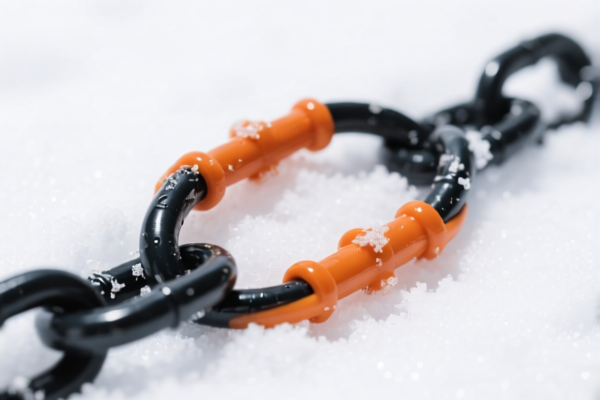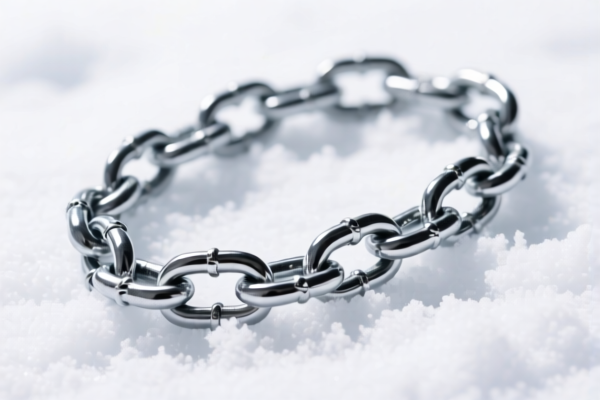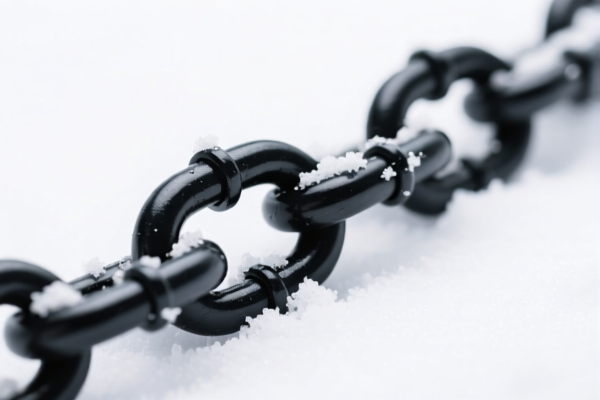| HS Code | Official Doc | Tariff Rate | Origin | Destination | Effective Date |
|---|---|---|---|---|---|
| 8206000000 | Doc | The rate of duty applicable to that article in the set subject t+30.0% | CN | US | 2025-05-12 |
| 8307103000 | Doc | 58.8% | CN | US | 2025-05-12 |
| 8307106000 | Doc | 58.8% | CN | US | 2025-05-12 |
| 7312900000 | Doc | 80.0% | CN | US | 2025-05-12 |
| 7315201000 | Doc | 80.0% | CN | US | 2025-05-12 |
| 7315205000 | Doc | 80.0% | CN | US | 2025-05-12 |
| 8425410000 | Doc | 55.0% | CN | US | 2025-05-12 |
| 8425490000 | Doc | 55.0% | CN | US | 2025-05-12 |
| 8479899599 | Doc | 57.5% | CN | US | 2025-05-12 |




Snow Chain
Snow chains, also known as tire chains, are devices fitted to the tires of vehicles to provide maximum traction when driving on snow and ice. A set typically consists of multiple chains – in this case, six pieces – designed to grip the slippery surface, enhancing vehicle control and reducing the risk of skidding.
Material
Snow chains are primarily constructed from the following materials:
- Steel: The most common material, offering high strength and durability. Different grades of steel are used, with hardened steel providing superior wear resistance.
- Alloy Steel: Provides a balance of strength and weight, often used in higher-end chains.
- Rubber: Used for chain components like tensioning straps and some cross-chain designs to provide better grip and reduce damage to tires and vehicle components.
Purpose
The primary purpose of snow chains is to significantly improve traction on:
- Snow-covered roads: Providing grip where tires alone struggle.
- Icy surfaces: Breaking through ice to reach a more stable road surface.
- Muddy terrain: In some cases, chains can be used to improve traction in deep mud.
Function
Snow chains function by:
- Increasing friction: The chain links dig into the snow or ice, creating a mechanical interlock with the surface.
- Distributing weight: The chains spread the vehicle’s weight over a larger area, reducing pressure on individual tire contact points.
- Creating biting edges: The cross-chain pattern provides multiple biting edges that enhance grip during acceleration, braking, and turning.
Usage Scenarios
- Mountain driving: Essential for vehicles traveling in mountainous regions with frequent snowfall.
- Winter conditions: Recommended for areas with consistent snow and ice during the winter months.
- Remote areas: Useful in areas where snow removal services are limited.
- Emergency situations: Can be used to free vehicles stuck in snow or ice.
Common Types
- Ladder Chains: The most basic and affordable type, featuring a straight ladder-like pattern of cross chains. Suitable for occasional use on relatively flat, packed snow.
- Diamond Chains: Feature a diamond-shaped pattern of cross chains, offering better traction and a smoother ride than ladder chains. A common all-around choice.
- Cable Chains: Use cables instead of chains, providing lighter weight and easier installation. Generally less durable than steel chains.
- Square Link Chains: Utilize square-shaped links for increased durability and aggressive traction. Often used in heavy-duty applications.
- V-Bar Chains: Feature V-shaped bars on the cross chains for enhanced ice grip. Suitable for challenging icy conditions.
- Spider Chains: A more complex design offering excellent traction and a relatively smooth ride, but typically more expensive.
The "6pcs" designation indicates a set designed for vehicles requiring multiple chains – typically for dual rear wheel vehicles, or vehicles with specific axle configurations. It's crucial to verify compatibility with the vehicle's tire size and model before use.
Snow chain, typically used for vehicle traction in winter conditions, falls under the classification of chain and parts thereof, of iron or steel. Based on the provided information, the following HS codes are relevant:
- 7315201000: Chain and parts thereof, of iron or steel: Skid chain: Not over
8 mm in diameter. This code applies to skid chains with a diameter of 8mm or less. - 7315205000: Chain and parts thereof, of iron or steel: Skid chain: Over
8 mm in diameter. This code applies to skid chains with a diameter exceeding 8mm.
Explanation of HS Code Structure:
- 73: This chapter covers articles of iron or steel.
- 15: This heading specifically covers chain and parts thereof.
- 20: This subheading further defines the type of chain – skid chain.
- 10/50: These numbers differentiate between chain diameter – less than or greater than 8mm, respectively.
Tariff Information:
Both HS codes 7315201000 and 7315205000 have the following tariff structure:
- Basic Duty: 0.0%
- Additional Duty: 25.0%
- Additional Duty (after April 2, 2025): 30.0%
- Total Duty: 80.0% (including the additional 25% or 30% duty)
Important Note:
According to the provided reference material, both HS codes 7315201000 and 7315205000 are subject to an additional duty of 25.0% currently, which will increase to 30.0% after April 2, 2025. Furthermore, these codes are specifically related to steel or aluminum products and are subject to an additional 25% duty. Please verify the material composition of the snow chain to ensure accurate tariff classification.
Customer Reviews
No reviews yet.